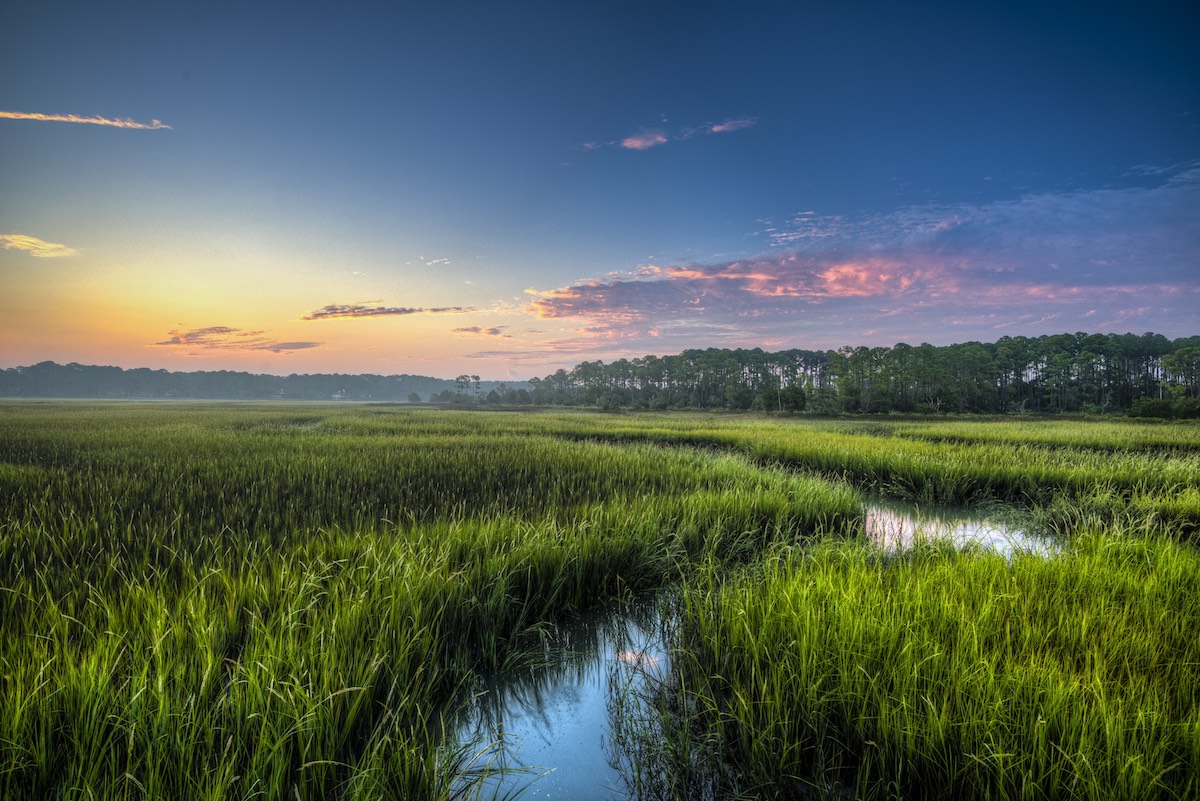The Untouched Beauty of Kiawah Island’s Environment
An Overview of the Kiawah Island Nature Conservancy
Kiawah Island is a beautiful barrier island that runs parallel to the mainland of South Carolina. As one of the most distinct landforms on Earth, barrier islands serve to protect the mainland by absorbing energy from oncoming waves and reducing coastal erosion. With the ocean on one side of the island and a shallow sound on the other, the natural environments of barrier islands are able to support an abundance of wildlife and natural habitats. It’s no wonder then, that Kiawah Island is home to a vast number of wildlife species from birds and mammals to fish and reptiles. With our brimming wildlife population and lush environments that are protected by long-term preservation practices, Kiawah Island is truly an environmental sanctuary.
Let’s discover how the Island maintains its untouched beauty with the immense help of the Kiawah Island Nature Conservancy.
A Brief History of the Kiawah Conservancy
The Kiawah Island Natural Habitat Conservancy is a non-profit grassroots organization that was established by Island residents in 1997. Since its creation, the Kiawah Conservancy has preserved 65 properties that total over 2,285 acres of pristine barrier island habitat. Due to the organization’s commitment to preserving the natural habitat, the Kiawah Conservancy achieved the Land Trust Accreditation in 2017. This accreditation signifies national recognition that Kiawah Island’s natural environment will continue to be protected indefinitely.
The Purpose of the Kiawah Conservancy
The mission of the Kiawah Island Nature Conservancy is to “measure, manage, improve, and advocate for the ecological health of Kiawah Island and its environs.” By implementing programs that promote the protection of the natural resources of Kiawah Island, the Conservancy benefits the community in a number of ways. Through fostering a long-term vision for land and habitat protection, the organization provides a credible voice for conservation efforts across Kiawah Island. All of these efforts combined improve the socioeconomic conditions and enhance the quality of life for everyone in the area.
Land Preservation
In accordance with the mission, the Kiawah Nature Conservancy works to preserve vital habitats and ecosystems around the Island. From creeks and marshes to maritime forests and wetlands, these ecosystems are preserved to protect the wildlife that call these areas home.
One of these preserved ecosystems is known as Little Bear Island. A 151.7-acre island forming the easternmost tip of Kiawah, Little Bear Island is bordered by both the Atlantic Ocean and the Stono Inlet. The habitat is characterized by maritime dune shrub thickets, tidal salt marshes, and coastal beaches. Here, you will find loggerhead sea turtles nesting on the sand, bird species flying overhead, and bobcats leaving their footprints behind on the sand — just to name a few. A thriving ecosystem brimming with wildlife, Little Bear Island has even been described as “one of the most important conservation easements across the country.”
Habitat and Wildlife Protection
As noted above, Kiawah Island is home to a variety of wildlife. In total, the Island supports 20 species of mammals, over 250 species of resident and migratory birds, 40 species of reptiles, and thousands of invertebrates. Not to mention, the Island is blooming with a large number of plants, native trees, shrubs, perennials, vines, ferns, and grasses that our native wildlife call home.

In order to further improve the wildlife habitats surrounding the Island, the Town of Kiawah Island founded the Grow Initiative — a community-wide effort to increase the use of native plants in landscaping projects. The town even organized and published a Grow Native plant database, which provides helpful resources regarding the growing conditions and other tips for planting and supporting these native plants. That way, residents and local landscape architects feel comfortable using native plants on their property and in their gardens — and our local wildlife can continue to thrive in these habitats.
Interested in learning more about the wildlife species that call Kiawah Island home? Plan a visit to the Heron Park Nature Center and download our Wildlife Lookbook to keep track of your sightings.
Environmental Research and Resources
The Kiawah Island Nature Conservancy has a research database that allows anyone to learn more about the wildlife and natural environments of the Island. Here, you can read scientific studies on a variety of topics such as the nesting activity of loggerhead sea turtles and research regarding barrier island formation. No matter what subject matter interests you, you’re sure to find information in the research database.
Additionally, there are resources for residents and visitors of the Island including information on how to respect, support, and protect native wildlife. You can also discover a list of things to do in nature around the Island and ways to volunteer in environmental efforts. If you are planning an upcoming visit with your children, be sure to check out the Junior Explorers program. And don’t forget to mark your calendars for upcoming Kiawah Conservancy events!
Experience Kiawah Island’s Natural Beauty
The Kiawah Island Nature Conservancy is dedicated to ensuring that the natural beauty of the environment remains for the enjoyment of generations to come. That way, you and your family can spot dolphins strand feeding in the waterways and watch loggerhead turtles hatch on the beach even years from now. It is this appreciation of the environment that makes Kiawah Island such a special place to call home.
If you are interested in seeing our pristine wildlife habitats for yourself, we invite you to visit the Island. While you’re here, we’d be delighted to take you on a tour of available homes and homesites if you are interested in calling Kiawah Island home.






